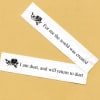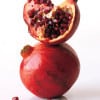Beinart at Bloom’s… Sometimes if I’m talking about the Jewish Food Movement I’ll say to an audience “put your hands in the air if you grew up with schmaltz in the fridge.” 90% of anyone 70 or over puts their hands in the air. Then I’ll say, “put your hands up if you have schmaltz in the fridge now.” If there are a hundred people in the audience, maybe two hands might go up. More recently – seeing quizzical faces – I added “put your hands up if you don’t know what schmaltz is.” A bunch of hands go up in the air – all of them amongst the younger people in the room. That’s the backdrop to Peter Beinart’s piece in Ha’Aretz, yesterday, copied here in full, because it sums up so clearly something I’ve been thinking about recently: I realized the other day that my two children, ages nine and six, have never tasted pastrami. In fact, I’m not even sure they know what it is. They’ve never tasted chopped liver or herring either. They’re unfamiliar with Dr. Brown’s Soda, and they feel no particularly affinity for rye bread. Were they growing up in Bismarck, North Dakota, this […]












